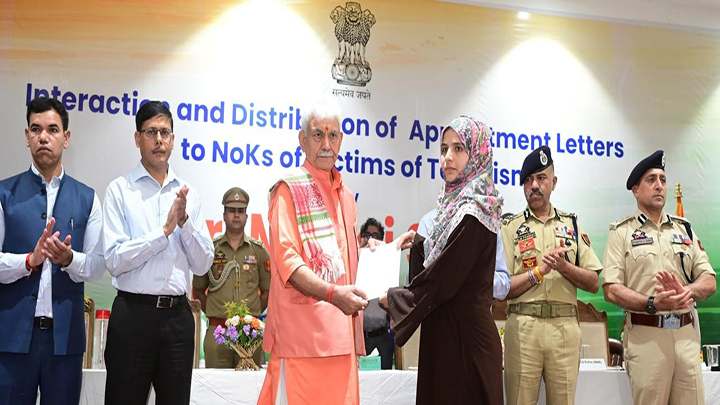
JK News Today Commentary
The narrative of terrorism in Jammu and Kashmir has undergone a big change in the past few weeks .The ecosystem that sustained it for decades has been challenged from within. Dignity has been conferred on victims of terrorism and their families like never before.
An effort has been made to hear out the victims of terrorism. Their families have gathered the courage to speak about what happened to their loved ones and the sufferings they underwent. Their pain was not only at the losing their earning hands at the hands of terrorists , but the stigma tagged to them- traitors to the cause of Kashmir’s political and religious freedom , collaborators . They were ostracized with no mercy even from the neighbour next door.
So far, the terrorism was seen in the acts of terror, terrorists, their backers and narrators. The victims of terror were consigned to files as names and numbers. In the due course, the names were replaced by the numbers, which were cited to showcase the horrors that the Vale had witnessed. Their numbers were stuck in a war of narratives within and across the border.

It is a situational irony that terrorism from across the border has been framed in specifics of the number of terrorists armed with weaponry coming into Jammu and Kashmir , threatening peace and stability of the place and system, but what gave it credence was never addressed adequately . It was the narration of the decades that “India was Kashmiris were suppressed and India was using military force to silence them.” This narrative was intensified in 1990 and thereafter for decades, and it has gone up further after the abrogation of Article 370 in August 2019.
Since then Pakistani line of narration has changed from the” suppression” to the loss of their demographic majority and loss of religious and political identity. Though these are not heard as loudly as would have been the case prior to the abrogation of the constitutional provision but there are many takers, including the ones who day in and day out sing paeans to the change in Kashmir – from violence of the past to present-day normalcy. They wanted normalcy but not without their political orientation of the past over seven decades.
This dominating narrative had made the victims of terror to retreat to oblivion .They were scared to come out and speak as they feared reprisals. They preferred to remain silent and suffer the indignity inflicted on them. They had no narrative as compared to the ones peddled by terrorists and their sympathizers. Some feeble attempts were made but that brought more harm than good to them. They became target of society. They were considered illegitimate sons and daughters of the soil. This was one kind of oppression against them. Second, they also were subjected to class discrimination as they were pushed to poverty, made to do menial jobs. There was no hope in their lives.
Recently, the J&K administration operating under Lieutenant Governor Manoj Sinha, representative of the Modi government in Srinagar, made efforts to trace and hear them out. It gave them space in the Kashmir‘s landscape and narration. This is quite important. A design to keep them living hell in their lives was torn apart. This, in itself dignified their presence. Their existence have been as Kashmiris was acknowledged, having the right to life of dignity with the recognition and redemption of their pain
Their economic security and dignity also has been conferred on them. They have been given jobs in the government services and others have been promised once they are traced. In fact, they have been encouraged to come and register their acts of terror which snatched everything from their lives.



